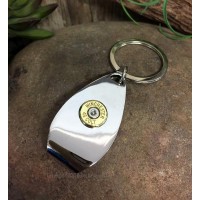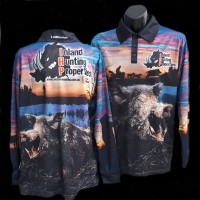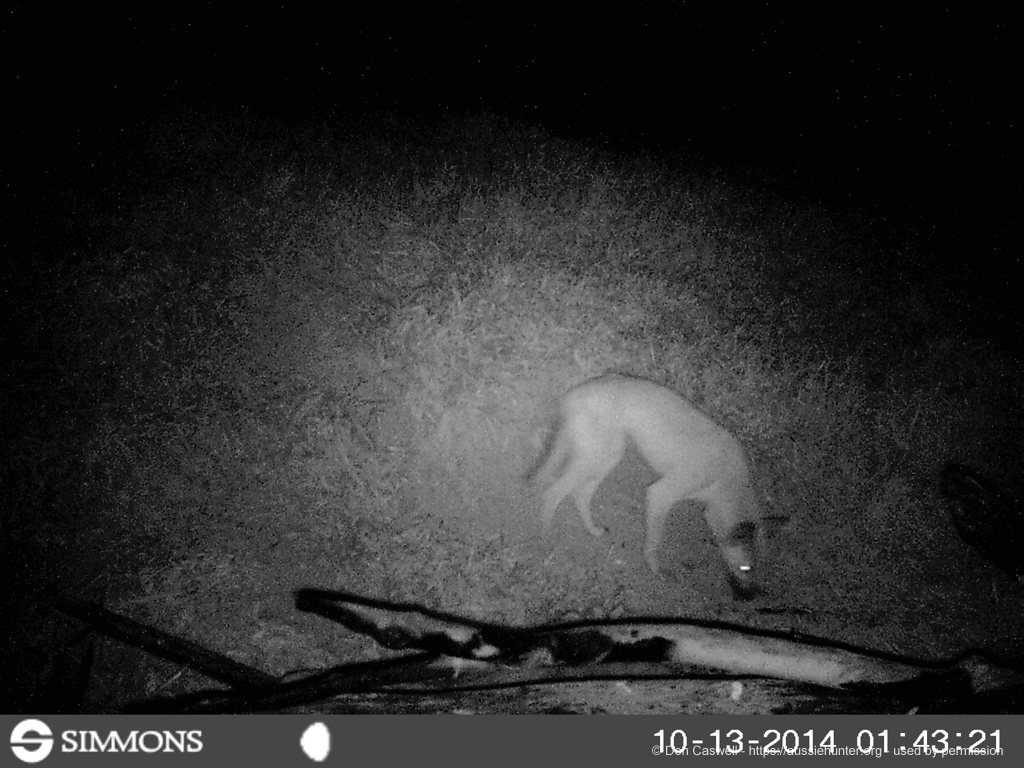
Wild Dogs can be as much creatures of habit as humans are. But established habits can prove to be dangerous, and bad. Bad habits can have fatal consequences, as Don Caswell explains.
Wild dogs had been attacking the new born calves and generally upsetting the breeding herd. It was prime wild dog country. The large cattle property rolled from rugged dividing ranges down to extensive river flats. The property was still heavily forested in most places as well. The access tracks were few and rough, even for ATVs. Most of the cattle work was done on horseback.
It would seem that everything was in the dog's favour and our chances of success were slim. However, we did have a few things to our advantage. The range country was steep and thickly timbered over a boulder-strewn terrain of long grass and scrub. After the wet season had passed the creeks quickly dried up and the only permanent water was that in a few of the large dams at the foot of the hills.
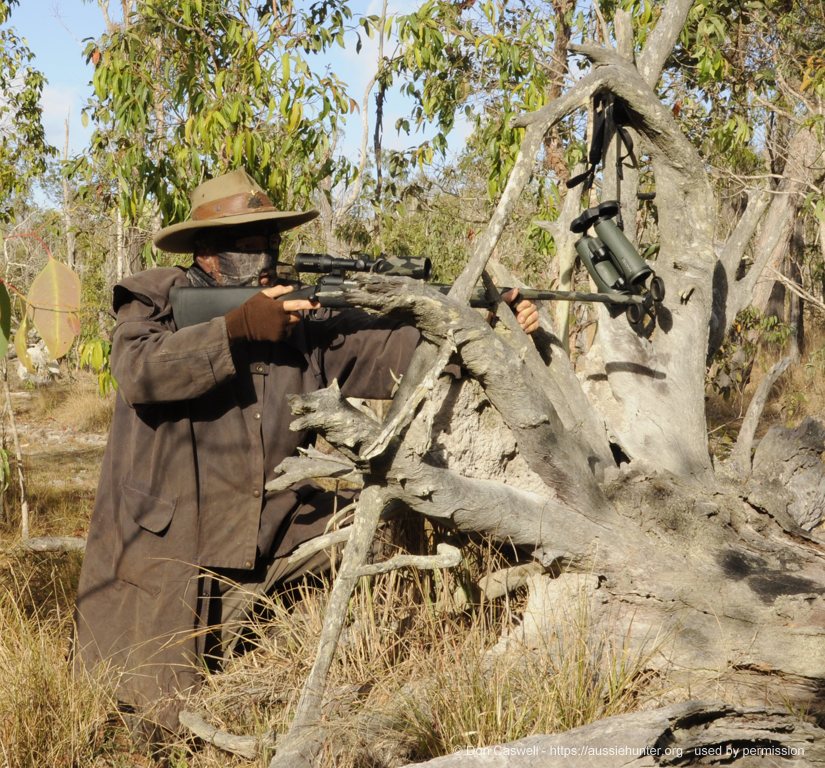
Wild dogs will mostly follow a track for the same reasons that you would. The walking along established tracks is much easier and visibility excellent. At times you will encounter particularly wary old dogs that have learnt to avoid paths and will always travel into the wind. Those types of wild dog can be extremely hard to come to terms with.
Most dogs though will opt to follow the easy way of the beaten tracks and more often than not they can be a bit over-confident and careless when it comes to watching the wind too. Another advantage for the hunter is that dogs are also prone to developing established habits. That trifecta of behaviours is an enormous advantage in hunting wild dogs.
There were three of us reconnoitring the place before working out a game plan on how to attack the wild dogs. My hunting buddy Mike had his son Peter along on the mission as well. After a discussion we had spread ourselves out around the edge of a large clearing, overlooking the dam. We had already walked the edges of the dam and had seen recent dog tracks.
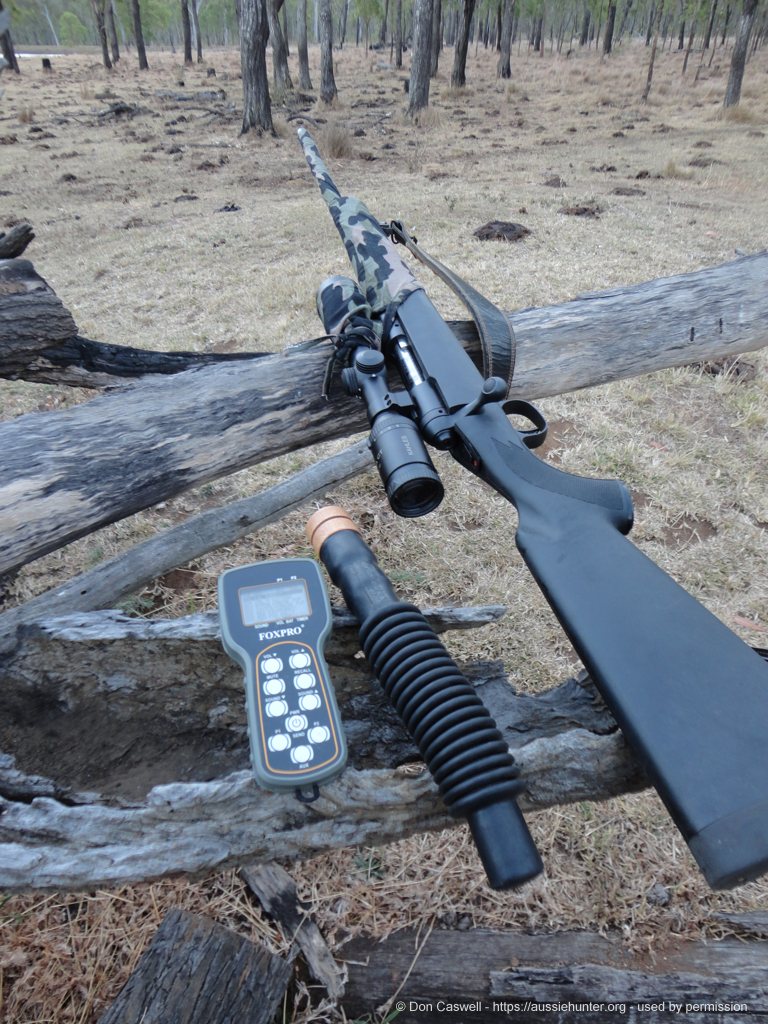
Generally, dogs will water in the early morning and in the late afternoon. We had positioned ourselves in the area we thought the dogs would approach and pass through. If any dogs did that and presented a safe and sure shot then we would take it. However, discipline was needed and no chance shots were to be taken. Best to pass on the chancy shots and be better positioned on the following day.
And that is just what transpired. Just as the sun set behind the nearby ridge a large male dog came trotting down the vehicle track from the opposite direction to what was expected. As wild dogs do, he was getting along at a jaunty pace, quickly covering the ground. The wind was blowing from behind him and he was clearly not taking any precautions in that regard. That is a particularly bad habit for a wild dog to foster.
He did not go to the dam to drink either. He came in close for a look without deviating or pausing and then passed around the bottom wall of the dam and headed up into the thickly forested valley that ran up into the range country. There was a last remnant of water a couple of kilometres further up where we had seen dog tracks.
We waited until dark and then regrouped to compare notes. Peter had seen a second dog, much further away that had also headed up the gully. So, the next afternoon, Mike and I set ourselves up on the corner of the dam wall while Peter went off to stake out another dam.
Hunkered down with only the tops of our heads protruding above the dam wall we had the full swathe of a 360 degree circle covered. Mike had his 308 Sako fitted up with a bipod and it made sense for him to cover the wide open country while I covered the lower, more forested country behind the dam wall.
In doing that, I set up my FoxPro remote predator call and decoy lure about 50 metres away in an open patch of short grass, spotlighted by the late afternoon sun. Any dogs sneaking up the timbered valley would see and hear that before they could scent us. Additionally, if the target dog approached in the same manner as the previous day, it would, on rounding the dam wall corner, see the lure and be distracted by that, reducing the chance of it detecting us.
We lay in our positions, still and wordless as the sun slid down to the range top. Mike had his Leica binoculars glued to his eyes and I was likewise constantly sweeping my share of the terrain with my Swarovskis. Just as the sun was having its last peek over the range a small flock of Red-tailed Black Cockatoos flew slowly over us. They gave their creaky call as they circled overhead before landing in a nearby gum tree.
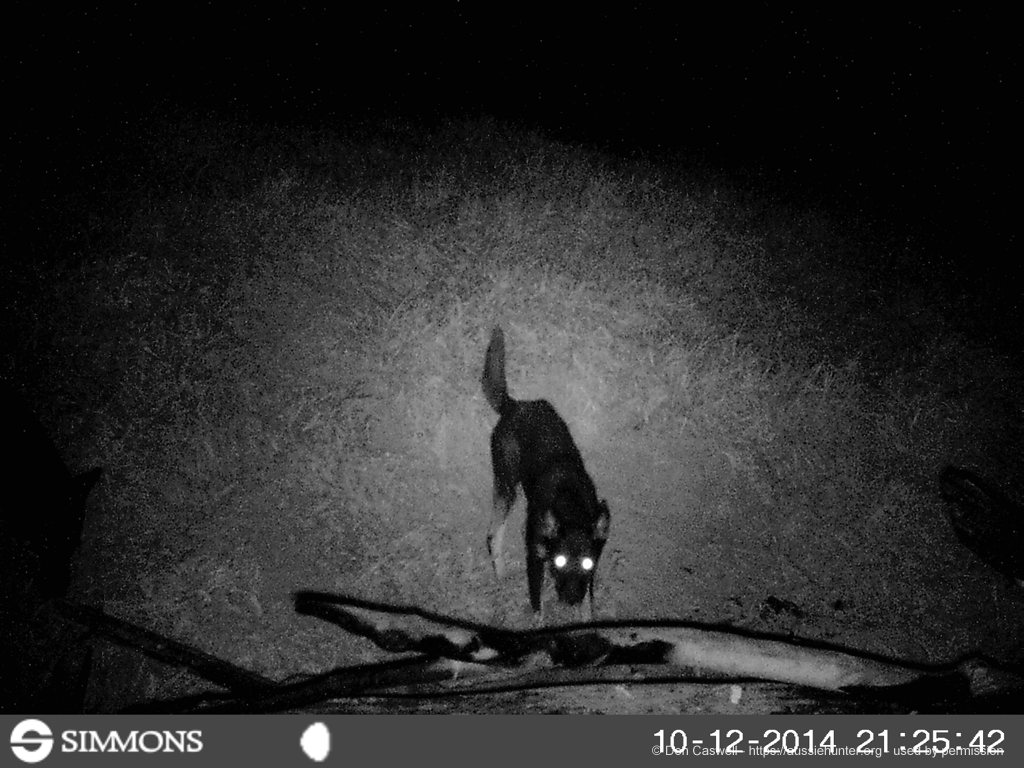
It took them a while to survey the surrounds before committing to a very cautious landing for a drink from the water's edge. My observation of the cockatoos was broken by Mike's voice, "I've got a dog!"
"Where?"
"About 11 o'clock and seven hundred metres away, coming down the track, just like yesterday."
It was the same dog. He had a distinctive curled-up tail that we had commented on the previous day. Mike and I had a quick, hushed discussion to confirm the game plan. If the dog kept to the script then he would pass within 50 metres of us. As he cleared the corner we would be exposed to his view and, even though we were lying low and wearing camo, there was every chance he would see us. However, once he came around the corner he should also see the decoy fluff-ball jiggling about and that would get his attention for a couple of seconds, giving us our last chance for an easy shot. The wind was a factor too. Once the dog reached that point he would likely pick up our scent even if he did not see us.
If the dog deviated from the plan, and appeared to be alerted, then Mike would take whatever reasonable chance was presented out to about 300 metres. If the dog did not come within striking distance then we would watch him go and make another plan for the morrow. The dog covered the distance between us in no time at his steady trot. I watched him through my binoculars over Mike's shoulder as he came on directly towards us. He was large and clear, filling the sight picture of my binoculars. I could see every hair on his coat.
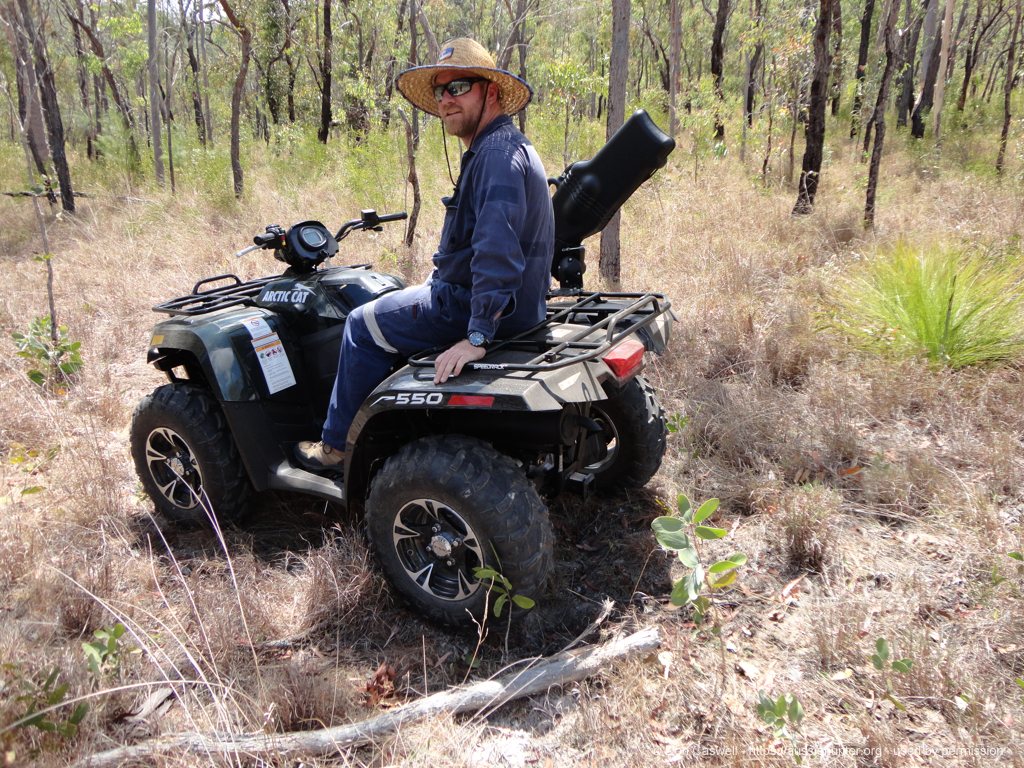
The dog did exactly as we had hoped he would. He trotted around the corner and glanced fixedly at Mike and I, but without showing any recognition or alarm. Before he had a chance to come to any conclusions in that regard I could see his attention divert to the lure. Without pausing he changed course slightly to head for the decoy, taking him nicely side on to us. Just as I was thinking, come on Mike, shoot, the silence was broken by the bark of Mike's 308. The dog was flattened in mid stride. He never knew what hit him. My hunting buddy and I exchanged congratulations. It is a great feeling when a plan works out perfectly and the end result is exactly as envisaged.
We waited another half hour for the dark to settle in, but no more dogs appeared. Camp was about five kilometres away and we figured on spotlighting a few bunnies on the way back. I put my rifle away as Mike got out his Brno 22 and the spotlight. We also kept the Sako 308 in the rack in case we had a chance encounter with another dog. A number of rabbits fell to the 22 and we were just on the point of making a bee-line for camp when the spotlight revealed a good sized pig rooting about on the edge of the track. Mike quickly exchanged rifles and the 308 boomed once more, rolling a big black sow. That was a nice bonus to round off a memorable afternoon of hunting.
Predator calls are most useful for bringing in wild dogs, but you also need to avoid over-using them. In an ambush situation I often use a combination of the Scotch bellows caller, which produces a raucous, penetrating call, and the FoxPro remote electronic caller with decoy. Every fifteen or twenty minutes I will give the bellows a good pump and then wait to see if there is any movement. If a dog does appear I avoid using the bellows again. Instead I may briefly activate the bunny distress call, at about half volume, on the remote FoxPro in order to draw the dog's attention to the decoy. Once the dog spots the decoy I do not make any more sound and simply wait for it to come into a good position for the shot.
If I am walking the country, I generally do not deploy the remote call and decoy. Instead I rely on manual callers. I will stop and use the bellows about every half kilometre or so. I give the Scotch bellows a good pump, wait five minutes and then repeat. If a dog appears I may give a brief, soft blow on my Tenterfield rabbit squealer. You need to avoid having the dog locate the source of the sound; otherwise he will be looking right at you. You just want to encourage it to keep coming in your general direction and give you the chance of a shot.
As already noted, wild dogs have two speeds, fast and really fast. They travel everywhere at a trot and if alarmed break into high gear and disappear in an instant. You need to be ready to take a shot as they trot by, or try to stop them with a whistle or other sound. If they do stop, it will be brief and they will then take alarm and sprint off, so you need to be ready.
Camo clothing is not essential, but having said that, your clothing needs to be drab and bush coloured so that you blend in with the surrounds. I often wear auscam army surplus gear, mostly because of the good pockets and heavy duty material more so than the camo effect. If it is a cool morning I will most times have on my old Dryzabone coat anyway.
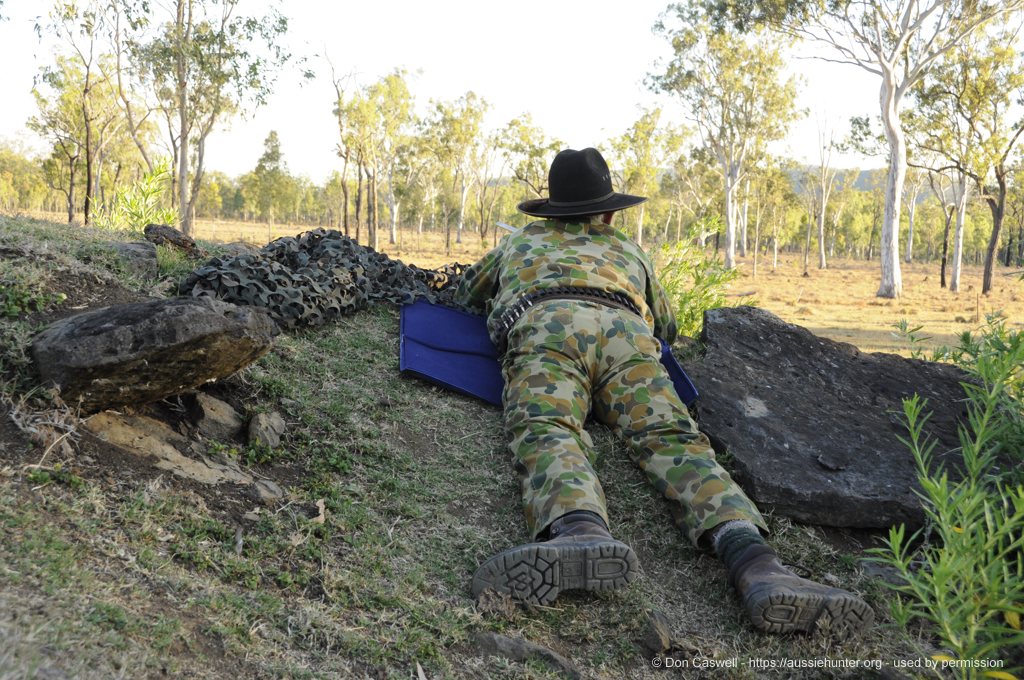
The other thing that I believe helps is to wear mitts to disguise the movement of your hands, especially so as you raise and lower binoculars regularly. I think a face mask is also a worthwhile proposition, particularly in wooded country where your encounters may be at close range. Likewise, I have a camo cover that slips over the front part of my rifle and also my scope. Reflections from shiny metal or glass are a real give away that will send your quarry off in a great hurry. Naturally, it pays to sit still and avoid any unnecessary movements. When using the binos make an effort to raise and lower them quite slowly.
You need to position yourself with due consideration to the wind. Even dogs that are a bit incautious and run with the wind will bolt when they get a whiff of close-by hunter. A good look around and behind you every now and then is a good idea too. Occasionally it pays dividends with the really cunning old dogs that will make a big detour in order to approach you position with the wind in their favour.
Trail cameras are a great tool for the hunter as well. It is often surprising how many dogs show up on these cameras when you were under the impression you were just chasing a single dog. It is not just dogs either. Trail cameras capture all manner of scavenging, and sometimes just plain curious, creatures. The time stamp is of prime interest and where a dog is visiting a spot at pretty much the same time each day you have the opportunity to be there waiting. Predictability is a bad habit for wild dogs.
https://www.westernhunting.com.au/hunting-wild-dogs-bad-habits#sigProIdc7c33e11df


